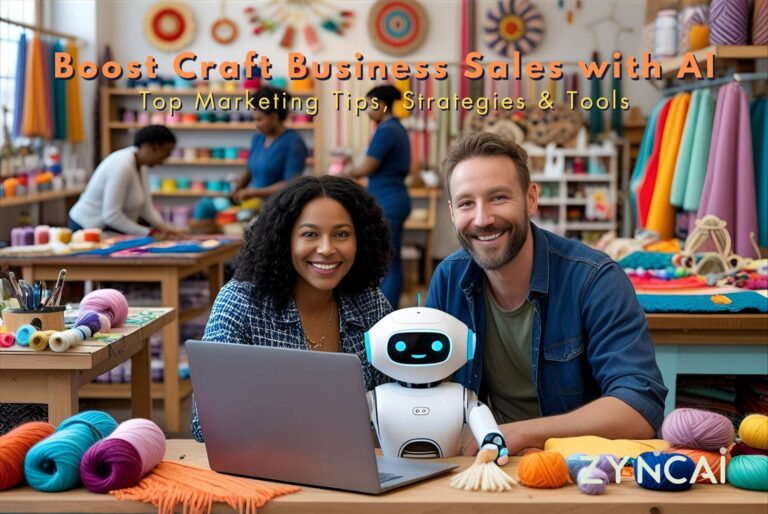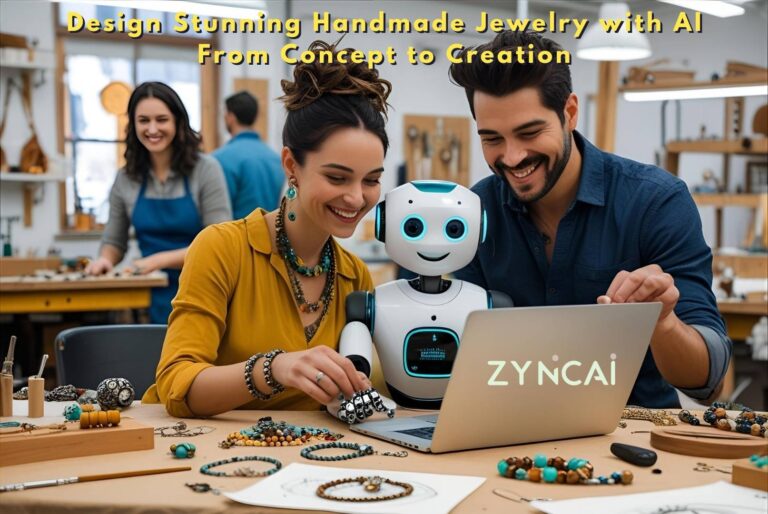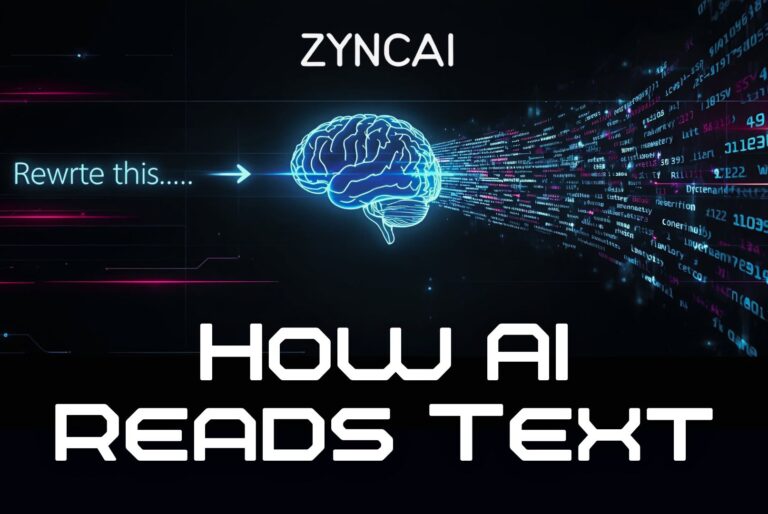Personalize Custom Gifts Efficiently: Top AI Tools That Help Craft Makers
Personalized custom gifts are booming. Everyone wants something unique and meaningful. For craft professionals, this is a golden opportunity. But personalizing every piece takes time and skill. Can I scale without losing quality? That is the real challenge we are facing.
AI tools are changing the game for makers like you. AI speeds up personalization and sparks fresh creativity. From design ideas to production workflows, these tools cut down hours of work. You don’t have to struggle with repetitive tasks or creative blocks.
In this post, you will learn how to personalize custom gifts efficiently with the best AI tools made for craft pros. Discover tools that generate design concepts, help with product descriptions, and even manage orders seamlessly. This guide gives you smart, practical solutions to save time, boost quality, and impress your customers no matter you are just starting out or scaling your business.
Embrace AI, and watch your craft business thrive, without sacrificing the personal touch that makes your gifts special.
The Rise of Personalized Custom Gifts in the Craft Industry
Personalized gifts is becoming a trend now. Customers want items that feel unique and personal, like a monogrammed necklace, a custom-engraved cutting board, or a hand-painted mug. This growing demand puts pressure on craft makers to deliver quality and speed.
But personalizing each piece by hand takes time. Hours can go into design and customization. The result slows order fulfillment and cuts into profits.
That is where you can get the help from technology. AI tools are changing the craft creation world. These AI tools helps you to automate personalization while keeping your artistic touch intact. These tools free up time and spark fresh ideas.
For craft professionals, this means more orders, less stress, and bigger growth. AI is not just a tool, it is a creative partner opening new doors and expanding what’s possible in your craft business.
Why Efficiency is Crucial in Personalizing Custom Gifts
Efficiency in personalizing custom gifts is not just about working faster. It is about working smarter. When craft professionals like you master the efficiency, they unlock benefits that go far beyond saving minutes or hours. It transforms the entire business, from how customers experience your brand to how you manage costs and grow sustainably. Being efficient means you can deliver that uniqueness consistently and at scale, in a competitive market where uniqueness matters.
Why Efficiency is Crucial in Personalizing Custom Gifts?
- Customer Satisfaction: Faster turnaround times lead to happier buyers and more repeat orders.
- Cost Management: Streamlined workflows cut down on labor expenses and material waste.
- Scalability: Efficient systems let you handle more orders without sacrificing quality.
- Creative Focus: Automating routine steps frees your mind for fresh, innovative designs.
By balancing speed and quality, you build a loyal audience and carve out a strong place in a crowded marketplace. Efficiency is not just a goal, it is a craft essential.
What AI Brings to the Table for Craft Makers
AI is no longer just hype. It is a powerful, practical tool for craft professionals like you can use for personalizing crafts. It helps to work smarter and create more efficiently, without losing the personal touch.
Below is what AI can do for craft professionals,
- Design Generation: Instantly create unique patterns, graphics, and fonts. Endless ideas at your fingertips.
- Customization Automation: Let customers personalize products online, while AI generates print-ready files automatically.
- Trend Insights: Analyze market data to spot rising styles and themes before they go mainstream.
- Production Efficiency: Automate inventory, order management, and some manufacturing steps to save time and reduce errors.
With AI, craft makers like you can offer more personalized choices, deliver faster, and stay ahead in a competitive market, all while reducing stress and boosting creativity.
Top AI Tools for Craft Makers to Personalize Custom Gifts Efficiently
A. AI Design Generators
1. Canva AI Design Features
Canva’s AI-powered design tools enable craft makers to quickly create stunning visuals such as logos, patterns, and social media graphics. Canva AI simplifies the design process for all skill levels, allowing customization of colors, fonts, and layouts to suit your brand perfectly with the AI-driven suggestions and an extensive template library.
- Best For: Small businesses and solo craft professionals needing fast, versatile design creation
- Why It’s Important: Reduces time spent on design while ensuring professional quality
- Key Features:
- AI style suggestions
- One-click background remover
- Instant resizing
- Template access
- Pros: Easy to use, large library of templates, collaborative features
- Cons: Limited advanced design controls for experts
- Free Package Available: Yes, with basic features
2. DALL·E 2
DALL·E 2 by OpenAI uses advanced AI to transform text prompts into unique, high-quality images. Craft makers can generate original artwork or product visuals instantly, offering endless creative possibilities without requiring graphic design expertise.
- Best For: Creators wanting unique, AI-generated art and concept visuals
- Why It’s Important: Expands creative potential and speeds up design brainstorming
- Key Features:
- Text-to-image generation
- Multiple style variations
- High-resolution export
- Pros: Produces highly original images, easy prompt-based interface
- Cons: Output may be unpredictable, requires prompt refinement skills
- Free Package Available: Limited free credits, pay-as-you-go thereafter
3. Artbreeder
Artbreeder uses AI to blend and evolve images, helping craft makers develop fresh design concepts by mixing styles and features. This tool is ideal for generating unique patterns, character designs, or stylized graphics through intuitive sliders and AI-powered blending.
- Best For: Artists and makers exploring new, evolving design ideas
- Why It’s Important: Sparks innovation and helps overcome creative blocks
- Key Features:
- AI image mixing
- Style transfer
- Customizable image “genes”
- Pros: Highly creative, collaborative features, high-resolution output
- Cons: Learning curve for new users
- Free Package Available: Yes, with some limitations
B. AI-Powered Customization Platforms
1. Zakeke
Zakeke is a 3D product customizer that lets customers personalize items live on your website. It automatically creates print-ready files and offers multi-angle previews, enhancing the buying experience and minimizing order mistakes for craft sellers.
- Best For: Online stores offering interactive, real-time customization
- Why It’s Important: Boosts customer engagement and reduces errors in production
- Key Features:
- 3D customization
- Instant previews
- Automated print file creation
- Pros: Immersive user experience, easy platform integration
- Cons: Subscription cost may be high for small shops
- Free Package Available: No, free trial offered
2. Printful Online Designer
Printful’s AI enhanced design tool enables personalized product creation directly on your e-commerce site. It automatically prepares production-ready files, simplifying fulfillment of custom print-on-demand gifts and minimizing mistakes.
- Best For: Craft makers selling personalized apparel and accessories
- Why It’s Important: Streamlines order-to-production workflow, saving time
- Key Features:
- Live product mockups
- AI-driven file checks
- Multiple export formats
- Pros: Easy integration with platforms, no inventory handling required
- Cons: Limited to Printful’s product range
- Free Package Available: Yes, pay-per-order pricing
3. Customily
Customily offers a powerful AI-driven editor allowing customers to personalize products with dynamic tools and conditional logic. It integrates with various e-commerce platforms, supporting complex customization options without complicating the user experience.
- Best For: businesses needing advanced and flexible product personalization
- Why It’s Important: enhances customer satisfaction and reduces customization errors
- Key Features:
- Drag-and-drop editor
- Real-time previews
- AI-powered template suggestions
- Pros: Flexible, supports complex product options, user-friendly interfaces
- Cons: Setup and customization can be time-consuming
- Free Package Available: No, free trial available
C. AI for Market Research and Trend Prediction
1. Google Trends
Google Trends analyzes search patterns to reveal popular topics and rising interests. Craft makers can monitor seasonal or emerging trends to tailor personalized gift offerings that meet current customer demands effectively.
- Best For: Makers needing free, real-time market insights
- Why It’s Important: keeps product ideas relevant and competitive
- Key Features:
- Real-time trend tracking
- Geographic data
- Search term comparison
- Pros: Free and easy to use, wide data coverage
- Cons: Limited depth for niche or highly specialized markets
2. Exploding Topics
Exploding Topics uses AI to identify rapidly growing trends before they reach mainstream popularity. This helps craft professionals stay ahead by adapting product lines early to capture new market interest.
- Best For: Trend-focused makers aiming to discover upcoming opportunities
- Why It’s Important: Prevents missed opportunities and drives innovation
- Key Features:
- AI trend detection
- Category filters
- Historical data analysis
- Pros: Early trend identification, actionable insights
- Cons: Requires subscription for full access
3. Trendalytics
Trendalytics combines AI with social media data to forecast design and fashion trends. It offers insights into consumer sentiment and style preferences, guiding craft makers in designing personalized gifts that resonate with their audience.
- Best For: Businesses seeking data-driven product development strategies
- Why It’s Important: Minimizes guesswork and aligns offerings with customer preferences
- Key Features:
- Social listening
- Predictive analytics
- Style segmentation
- Pros: Deep insights, multi-source data integration
- Cons: Pricing aimed at larger businesses
D. AI Automation for Production and Inventory Management
1. Shopify AI Inventory Apps
Shopify’s AI-powered inventory apps monitor stock levels, forecast demand, and send reorder alerts automatically. Craft makers avoid stockouts and ensure smooth fulfillment, especially during high-demand periods.
- Best For: E-commerce craft stores managing inventory within Shopify
- Why It’s Important: Enhances supply chain reliability and customer satisfaction
- Key Features:
- Demand forecasting
- Automated alerts
- Sales data syncing
- Pros: Seamless Shopify integration, reduces stock shortages
- Cons: Limited to Shopify platform users
- Free Package Available: Yes, varies by app
2. Orderhive
Orderhive automates inventory, order, and shipping management using AI insights. It supports multi-channel syncing and order prioritization, helping craft businesses operate efficiently and scale without errors.
- Best For: Growing craft businesses needing comprehensive order management
- Why It’s Important: Improves operational efficiency and accuracy
- Key Features:
- Multi-channel inventory sync
- AI-driven order prioritization
- Shipment tracking
- Pros: Scalable, supports multiple platforms
- Cons: Setup can be complex
- Free Package Available: Yes, with feature limits
3. Zoho Inventory
Zoho Inventory leverages AI to optimize stock control and automate reorder workflows. It offers detailed reporting and supports multi-warehouse management, helping craft makers maintain smooth production and delivery.
- Best For: Small to medium-sized craft businesses
- Why It’s Important: Reduces waste and ensures timely product availability
- Key Features:
- AI reorder automation
- Batch tracking
- Multi-warehouse support
- Pros: Affordable, integrates well with Zoho’s ecosystem
- Cons: Some advanced features require paid plans
- Free Package Available: Yes, with basic features
Real-Life Examples: Craft Makers Who Successfully Use AI for Personalization
Meet Lily, a passionate jewelry maker who wanted to stand out in the crowded craft market. She turned to AI design tools to bring her bracelet ideas to life. Lily effortlessly creates unique designs that truly resonate by tapping into customer preferences and current trends. Her website features an AI-powered customization tool, letting customers pick charms and colors with ease. The best part? Lily receives production-ready files instantly, freeing her from tedious manual work and speeding up delivery.
On the other side of town, there’s Jake, who runs a cozy candle business. He uses AI to analyze trends, predicting which scents and packaging styles will become popular next season. This insight helps him craft personalized candles that customers love. To keep things running smoothly, Jake relies on AI to manage inventory, automating stock tracking and reorder alerts. This ensures his candles are always ready to ship on time, even during busy periods.
Takeaway for You
These stories show how AI can transform your craft business, which helps you to create personalized products faster, predict what customers want, and manage your operations with ease. Whether you’re designing unique jewelry or crafting custom candles, AI tools can free up your time, boost creativity, and grow your business without losing the personal touch your customers value.
How to Choose the Right AI Tools for Your Craft Business
Picking the perfect AI tools can feel overwhelming, but focusing on a few key factors will make the decision easier and more effective.
- Budget
Start small by exploring free or low-cost options. This lets you test how AI fits your business without a big upfront investment. As you see results, you can scale up with more advanced tools. - Ease of Use
Look for platforms designed with simplicity in mind. Tools that don’t demand technical expertise save you time and frustration, letting you focus on your craft instead of troubleshooting software. - Integration
Seamless compatibility with your website, production workflows, and sales channels is a game changer. The right tools should slot naturally into your existing processes to boost efficiency, not complicate it. - Customer Experience
Choose AI solutions that empower your customers to personalize products effortlessly. A smooth, intuitive customization process keeps buyers engaged and increases the likelihood of repeat sales.
Don’t hesitate to take advantage of trial periods and demos. Hands-on experience is the best way to discover which tools truly align with your workflow and business goals. Remember, the right AI tool isn’t just about features, it’s about how well it supports your creative vision and helps your craft business grow.
Best Practices for Using AI to Personalize Custom Gifts
Integrating AI into your craft business can be a game-changer. But it works best when combined thoughtfully with your skills and creative vision. AI should be a powerful assistant, not a replacement. Below are some best practices for you to get the most from AI while preserving the unique value only you can bring.
- Blend AI with Human Touch
Use AI to automate repetitive tasks like generating design templates or managing orders, but always add your personal craftsmanship to make each piece special. For example, let AI suggest bracelet charm combinations, but customize the final design with your signature engraving style. This keeps your creations authentic and meaningful. - Maintain Quality Checks
AI can speed up design or production, but don’t skip thorough reviews. Before finalizing a custom-engraved cutting board or hand-painted mug, you should personally inspect well the AI-generated files or automated order details to catch errors or tweak details. This ensures every gift meets your high standards and delights customers. - Stay Authentic
Avoid letting AI produce generic or cookie-cutter designs that dilute your brand. Use AI as a tool to enhance your signature style rather than replace it. If your craft is known for rustic charm, for example, guide the AI-generated design to reflect natural textures and earthy tones, maintaining the feel your customers love. - Keep Learning
AI tools evolve fast, and new features or platforms emerge regularly. Dedicate time to exploring updates or new AI solutions that can improve your workflow. For instance, if a new AI platform offers better color matching for fabric prints, test it out to see if it can save you time or improve product quality.
By combining AI’s efficiency with your craftsmanship, quality control, and authentic style, you will create personalized gifts that stand out, and keep your customers coming back for more.
Future Trends: AI and the Evolution of Personalized Craft Gifts
The future of AI in the craft industry is incredibly exciting. As AI technology advances, it will become far more intuitive and immersive, allowing craft makers to push the boundaries of personalization like never before. Imagine offering your customers virtual try-ons for custom jewelry, so they can see exactly how a bracelet or necklace looks on their wrist before buying.
Picture 3D design previews that let buyers rotate and explore every angle of a handcrafted vase or custom candle holder. Voice-activated personalization will also become commonplace, letting customers describe their ideal gift out loud while AI translates that vision into detailed designs instantly.
Craft professionals who adopt these innovations early will not only save time but also deliver a uniquely engaging shopping experience that builds customer loyalty and drives sales.
Craft professionals can expect the following from AI in the near future,
- Virtual Try-Ons
Customers can virtually “wear” or place products using augmented reality. For example, a jewelry maker could let clients see how a custom ring fits their finger via a smartphone app, reducing returns and increasing confidence in purchases.
Craft professionals can use this feature to offer immersive previews, helping buyers feel confident about custom choices, which reduces cancellations and boosts sales. - 3D Design Previews and Simulations
AI-powered 3D modeling tools will allow makers to present hyper-realistic previews of personalized gifts. A ceramic artist could showcase how glaze colors and textures will look on each pot before firing, helping customers visualize and customize with confidence.
Craft makers can leverage 3D previews to allow customers to experiment with design options, leading to more personalized orders and fewer production errors. - Voice-Activated Customization
Using natural language processing, customers could describe their desired product by voice. For instance, a candle maker might allow a buyer to say, “I want a lavender-scented candle in a vintage glass jar with a rustic label,” and AI would generate a matching product design.
Craft professionals can integrate voice commands to simplify the ordering process, making personalization faster and more accessible, especially for mobile shoppers. - Predictive Personalization
AI will analyze individual customer preferences, purchase history, and even social media activity to suggest highly tailored gift options. This could help craft businesses up-sell or cross-sell with personalized recommendations, like suggesting matching accessories for a custom necklace.
Craft makers can use this data-driven insight to create targeted marketing campaigns and personalized product bundles, increasing customer satisfaction and sales. - Smart Supply Chain and Production Automation
Future AI systems will seamlessly forecast demand and optimize material ordering. For example, a handmade soap maker could automate ingredient purchasing just before a surge in orders, avoiding delays and excess stock.
Craft businesses can use these tools to maintain optimal inventory levels, reduce waste, and ensure timely delivery during peak seasons. - Collaborative AI Design Assistants
Craft professionals will work alongside AI that offers creative suggestions, color palettes, or style adjustments during the design process. A textile artist could receive AI-driven ideas for patterns inspired by trending themes, blending human creativity with machine insight.
Craft makers can treat AI as a creative partner, using it to generate fresh ideas and refine designs, speeding up their creative workflow without losing authenticity. - Sustainability Optimization
AI could help craft makers minimize waste by suggesting the most efficient material layouts or eco-friendly alternatives based on customer demand and design complexity.
Craft professionals can adopt AI-driven sustainability tools to reduce costs and appeal to eco-conscious customers by promoting greener production methods.
By integrating these cutting-edge AI capabilities, craft professionals will not only enhance personalization but also scale their businesses more sustainably and creatively. Staying informed and adaptable will be key to thriving in this AI-driven craft revolution.
FAQs about AI Tools for Craft Makers
Q1: Do I need technical skills to use AI tools?
Most AI tools today are user-friendly and require minimal technical knowledge, making them accessible to all craft makers.
Q2: Will AI replace my creativity?
No, AI is designed to assist and enhance your creativity, not replace it. Your personal touch remains essential.
Q3: Are AI tools expensive?
Many AI tools offer free plans or affordable subscriptions tailored for small businesses.
Q4: Can customers personalize gifts themselves using AI?
Yes, several AI-powered platforms allow customers to customize and preview their orders in real-time.
Q5: How do I integrate AI tools with my online store?
Most AI tools provide plugins or APIs for easy integration with popular e-commerce platforms like Shopify, WooCommerce, and Etsy.
Q6: Can AI help me generate new design ideas?
Absolutely. AI design generators can quickly create unique patterns, graphics, and concepts to inspire your craft projects.
Q7: Will AI tools improve my production speed?
Yes, AI automates repetitive tasks like file preparation and inventory tracking, allowing you to focus on creative work.
Q8: Are AI tools suitable for small craft businesses?
Definitely. Many AI tools are scalable and affordable, making them ideal for small to medium-sized craft businesses.
Q9: Can AI analyze market trends for personalized gifts?
Yes, AI-driven analytics can provide insights into popular styles, colors, and products that are trending with customers.
Q10: How secure is customer data on AI customization platforms?
Reputable AI platforms follow strict data privacy standards to protect customer information.
Q11: Can AI tools handle multiple sales channels?
Many AI inventory and order management tools support synchronization across multiple platforms like Etsy, Amazon, and Shopify.
Q12: How accurate are AI-generated designs?
AI designs are usually high-quality but should be reviewed and customized to ensure they fit your brand and craftsmanship standards.
Q13: Can I customize AI-generated designs?
Yes, most tools allow you to tweak colors, shapes, and details to make designs uniquely yours.
Q14: How does AI impact product pricing?
AI can help optimize pricing by analyzing market demand and competitor pricing trends.
Q15: Can AI improve customer service?
Yes, chatbots and AI assistants can handle routine queries, freeing up your time for complex customer interactions.
Q16: What types of crafts benefit most from AI tools?
Jewelry, personalized gifts, apparel, home décor, and candles are some popular crafts that benefit greatly from AI.
Q17: Do AI tools support real-time product customization?
Many platforms offer live previews and instant customization feedback for customers.
Q18: Can AI help reduce material waste?
Yes, AI can optimize cutting layouts and production schedules to minimize leftover materials.
Q19: Is training required to use AI tools effectively?
Most tools come with tutorials and support, and the learning curve is generally gentle for beginners.
Q20: Can AI help with marketing my craft business?
AI-powered marketing tools can analyze customer data and automate targeted campaigns.
Q21: Will AI tools slow down my workflow initially?
There might be a short adjustment period, but once integrated, AI tools usually speed up your processes.
Q22: How customizable are AI platforms?
Many AI tools offer flexible settings and integrations so you can tailor them to your workflow.
Q23: Can AI assist with packaging and shipping logistics?
Certain AI-powered inventory and fulfillment tools can streamline these tasks to reduce errors and delays.
Q24: How do I know which AI tool suits my business best?
Start with trial versions, and consider factors like budget, ease of use, and integration with your current systems.
Q25: Can AI tools help me keep up with competitors?
Yes, AI provides data-driven insights to help you stay ahead by adapting to trends quickly.
Q26: Are AI tools useful for handmade product photography?
Some AI apps enhance product images, automate background removal, and suggest styling tips to improve visual appeal.
Q27: How does AI support scalability in craft businesses?
By automating routine tasks and providing insights, AI allows you to handle more orders without sacrificing quality.
Q28: Can AI tools improve personalization accuracy?
Yes, AI algorithms reduce human error by precisely interpreting customer customization requests.
Q29: Will AI tools integrate with offline sales or markets?
While primarily digital, some AI tools support inventory and order management that can sync with offline sales through POS systems.
Q30: What should I watch out for when choosing AI tools?
Look for transparency in pricing, reliable customer support, data security, and user reviews to ensure the tool fits your needs.





